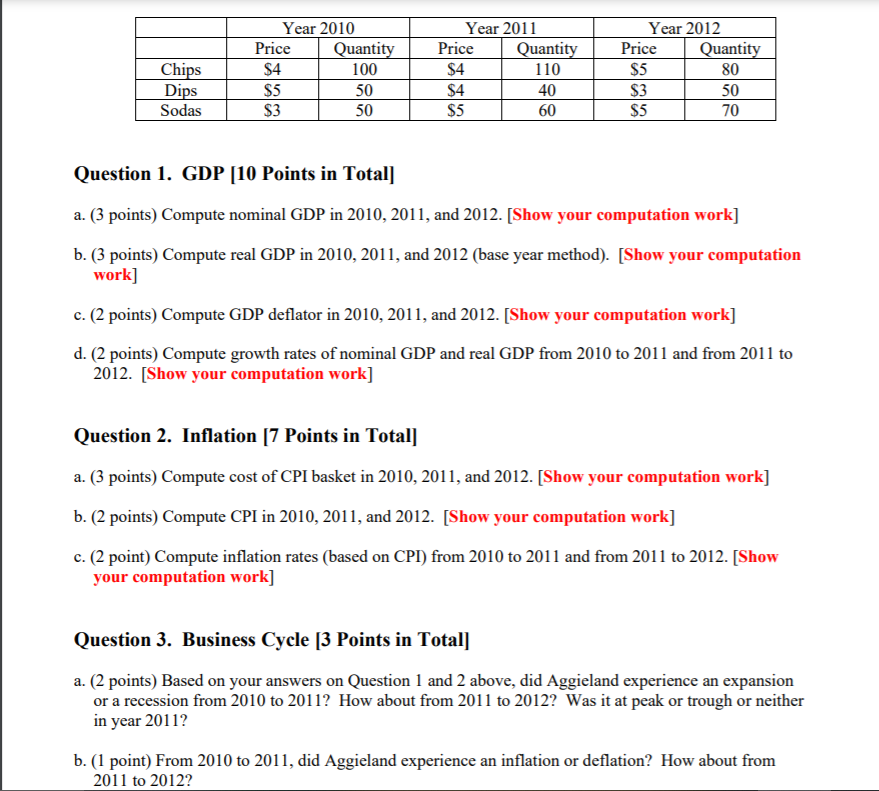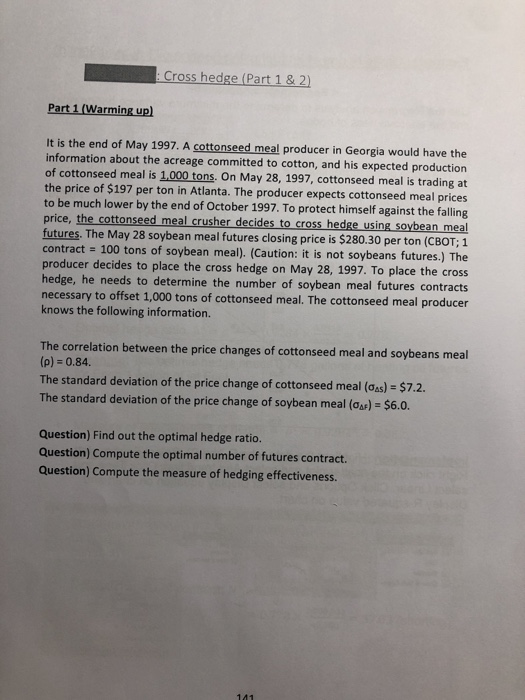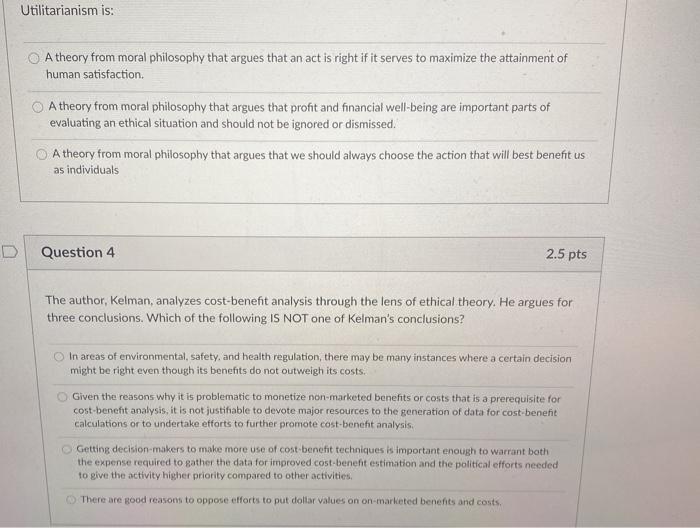




Imagine you are analyzing an energy production project, there are two alternatives: build- ing a new natural gas energy plant or building a new solar energy farm.
For the natural gas plant: it requires an initial investment of $6,000,000, has fixed pro- duction cost of $50 per MWh, the amount of energy produced is constant and set at 200 MWh per day. It also produces 30,000 tons of CO2 per year at a cost of $5 per ton. The life expectancy of this plant is 30 years.
For the solar farm: it requires an initial investment of $12,000,000, has a variable cost of $10 per MWh, the amount of energy produced depends on the daily weather, with a 50% probability the day will be sunny and will produce 500MWh, with a 30% probability the day will be cloudy and will produce 250MWh and with a 20% probability the day will be stormy and will produce zero MWh, however, the plant has a contract were they are committed to supply 500MWh every day and must buy it at the wholesale market at a price of $100 per MWh if they can't provide the required amount on it owns. This farm has no environmental cost. Finally the life expectancy of the farm is 20 years.
The city they plan to provide electricity values each MWh at $80 and they will pay this amount to the producing plant.
You can aggregate all the (expected) yearly cost at the start of each year and aggregate all the (expected) yearly benefits at the end of each year. The interest rate is 5% and there is no need to consider daily interest rates (i.e. you may aggregate inside each year ignoring the value of time).
With all this information, the city council ask you to: (a) (10 pts) Calculate the NPV for the natural gas plant.
(b) (10 pts) Calculate the expected NPV for the solar farm.
(c) (5 pts) Only using the values from (a) and (b), compare the two options and give a
recommendation to the city.
d) (10 pts) Do you think your recommendation in (c) is appropriate? Why or why not? If you were able to make changes as to how you use the values found in part (a) and (b) to give a more complete recommendation, how would you do it?
Year 2010 Year 2011 Year 2012 Price Quantity Price Quantity Price Quantity Chips $4 100 $4 110 $5 80 Dips $5 50 $4 40 $3 50 Sodas $3 50 $5 60 $5 70 Question 1. GDP [10 Points in Total] a. (3 points) Compute nominal GDP in 2010, 2011, and 2012. [Show your computation work] b. (3 points) Compute real GDP in 2010, 2011, and 2012 (base year method). [Show your computation work] c. (2 points) Compute GDP deflator in 2010, 2011, and 2012. [Show your computation work] d. (2 points) Compute growth rates of nominal GDP and real GDP from 2010 to 2011 and from 2011 to 2012. [Show your computation work] Question 2. Inflation [7 Points in Total] a. (3 points) Compute cost of CPI basket in 2010, 2011, and 2012. [Show your computation work] b. (2 points) Compute CPI in 2010, 2011, and 2012. [Show your computation work] c. (2 point) Compute inflation rates (based on CPI) from 2010 to 2011 and from 2011 to 2012. [Show your computation work] Question 3. Business Cycle [3 Points in Total] a. (2 points) Based on your answers on Question 1 and 2 above, did Aggieland experience an expansion or a recession from 2010 to 2011? How about from 2011 to 2012? Was it at peak or trough or neither in year 2011? b. (1 point) From 2010 to 2011, did Aggieland experience an inflation or deflation? How about from 2011 to 2012?Cross hedge ( Part 1 & 2) Part 1 (Warming up) It is the end of May 1997. A cottonseed meal producer in Georgia would have the information about the acreage committed to cotton, and his expected production of cottonseed meal is 1,000 tons. On May 28, 1997, cottonseed meal is trading at the price of $197 per ton in Atlanta. The producer expects cottonseed meal prices to be much lower by the end of October 1997. To protect himself against the falling price, the cottonseed meal crusher decides to cross hedge using soybean meal futures. The May 28 soybean meal futures closing price is $280.30 per ton (CBOT; 1 contract = 100 tons of soybean meal). (Caution: it is not soybeans futures.) The producer decides to place the cross hedge on May 28, 1997. To place the cross hedge, he needs to determine the number of soybean meal futures contracts necessary to offset 1,000 tons of cottonseed meal. The cottonseed meal producer knows the following information. The correlation between the price changes of cottonseed meal and soybeans meal (p) = 0.84. The standard deviation of the price change of cottonseed meal (Oas) = $7.2. The standard deviation of the price change of soybean meal (OAF) = $6.0. Question) Find out the optimal hedge ratio. Question) Compute the optimal number of futures contract. Question) Compute the measure of hedging effectiveness.Utilitarianism is: A theory from moral philosophy that argues that an act is right if it serves to maximize the attainment of human satisfaction. OA theory from moral philosophy that argues that profit and financial well-being are important parts of evaluating an ethical situation and should not be ignored or dismissed. A theory from moral philosophy that argues that we should always choose the action that will best benefit us as individuals Question 4 2.5 pts The author, Kelman, analyzes cost-benefit analysis through the lens of ethical theory. He argues for three conclusions. Which of the following IS NOT one of Kelman's conclusions? O In areas of environmental, safety. and health regulation, there may be many instances where a certain decision might be right even though its benefits do not outweigh its costs. Of Given the reasons why it is problematic to monetize non-marketed benefits or costs that is a prerequisite for cost-benefit analysis, it is not justifiable to devote major resources to the generation of data for cost-benefit calculations or to undertake efforts to further promote cost-benefit analysis. Getting decision-makers to make more use of cost-benght techniques is important enough to warrant both the expense required to gather the data for improved cost-benefit estimation and the political efforts needed to give the activity higher priority compared to other activities, (): There are good reasons to oppose efforts to put dollar values on on-marketed benefits and costs,Which statement about the la fiber is NOT correct? O it excites spinal inhibitory interneurons to inhibit alpha-motoneurons to the antagonist muscle (reciprocal inhibition) O its steady-state firing rate is proportional to the length of the muscle it innervates O if the muscle is rapidly stretched, la fibers from that muscle have an initial rapidly-adapting response that is proportional to the rate of muscle stretch its peripheral end wraps around the equatorial region of the intrafusal muscle fiber it has monosynaptic inhibitory synapses with a-motoneurons innervating the same muscle so as to prevent the muscle from over-contracting Question 27 1 pts Remembering how to mount and ride a bicycle is an example of: classical conditioning LTD (long term depression) working memory declarative memory procedural memory1. For the two parts of this question, state the appropriate distribution to use and calculate the mean, variance and the probabilities indicated: In an intermediate level economics class there are 16 students. Nine of these are economics majors. For class discussion purposes five students are randomly selected. Distribution = 1. For the two parts of this question, state the appropriate distribution to use and calculate the mean, variance and the probabilities indicated: In an intermediate level economics class there are 16 students. Nine of these are economics majors. For class discussion purposes five students are randomly selected. Mean # of econ majors selected from 5 students = 1. For the two parts of this question, state the appropriate distribution to use and calculate the mean, variance and the probabilities indicated: In an intermediate level economics class there are 16 students. Nine of these are economics majors. For class discussion purposes five students are randomly selected. Variance of # of econ majors out of 9 students =
















